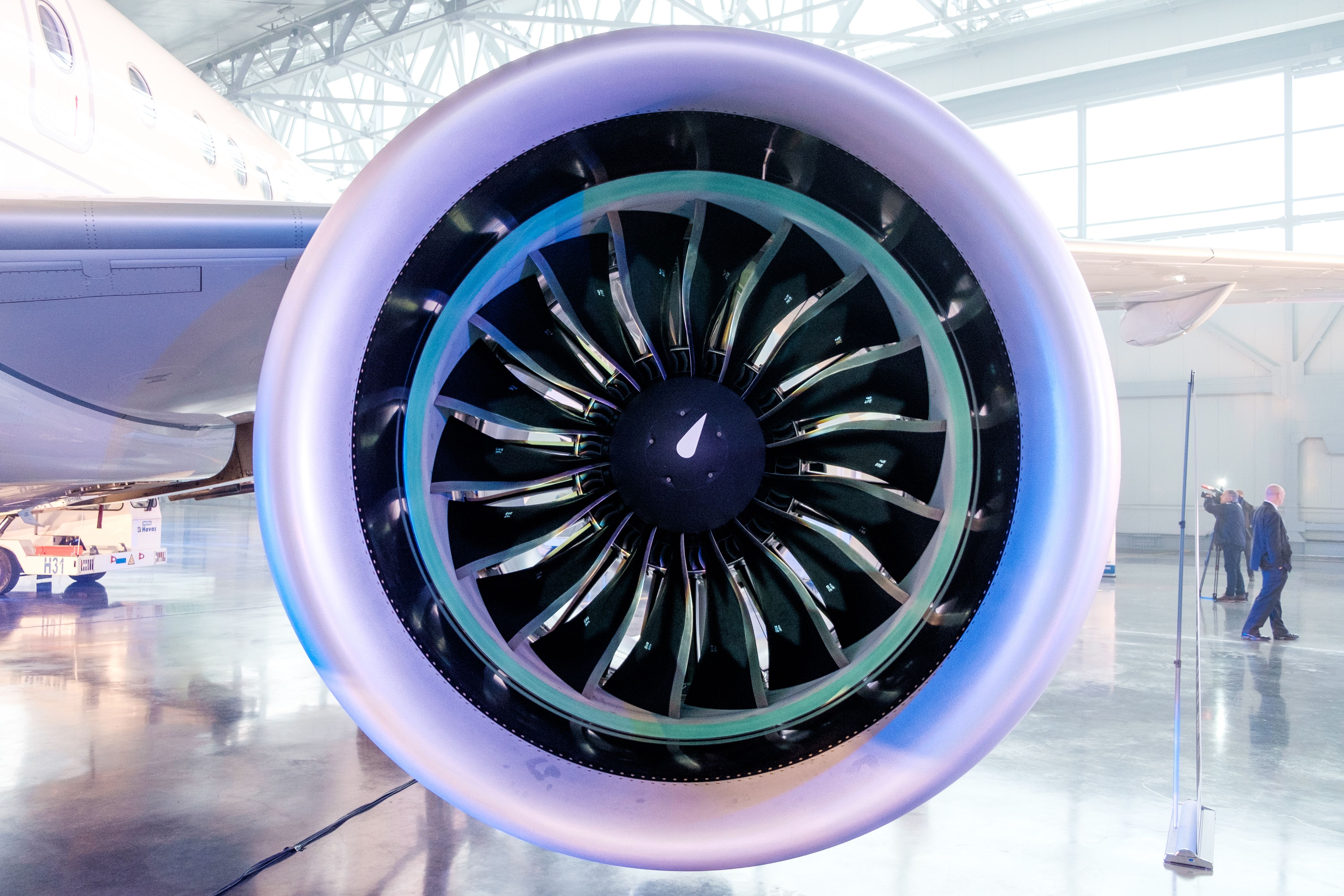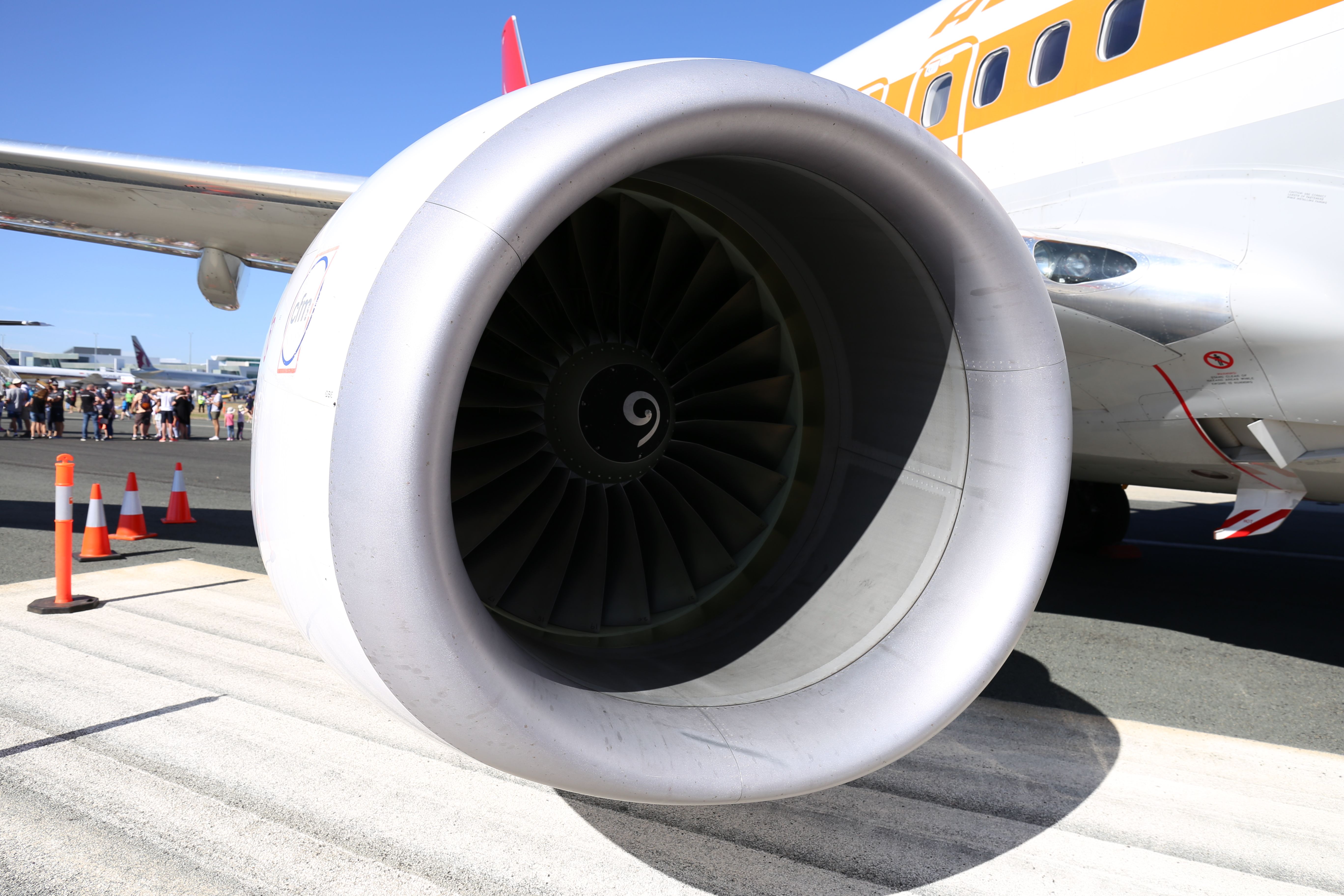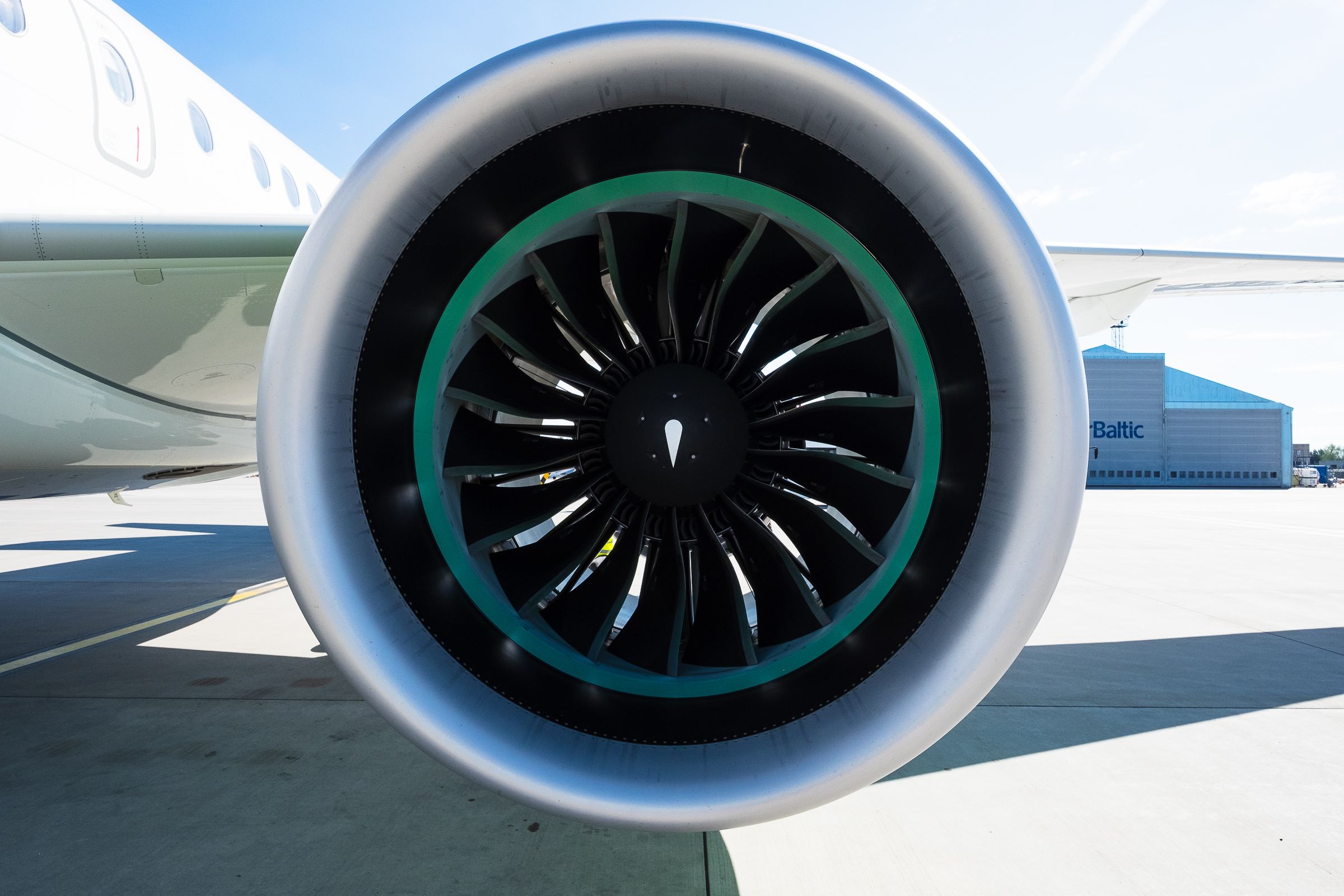Aircraft engines work by compressing the incoming air through a series of compressor stages. The temperature of the air increases with pressure. The high-temperature compressed air is mixed with pressurized fuel and ignited in the combustion chamber. The hot gasses expand and pass through a series of turbine stages before exiting through the exhaust.
Low bypass ratio engines allow more air to enter the core to produce more thrust. Low bypass ratio engines are typically used on supersonic combat aircraft due to their high power requirements. Such engines are relatively less fuel-efficient and much noisier.
High bypass ratio engines are ideal for subsonic speeds. These engines allow approximately 10% of the incoming air to enter the core while the rest 90% goes to the bypass. Such engines are much quieter and fuel-efficient.
Turbofan configurations
Turbofan engines are designed and configured based on power requirements. One of the primary elements of a turbofan is a spool. A spool is a single combination of compressor, turbine, and shaft rotating at a single speed. Turbofan engines may have a single-spool, dual-spool, or three-spool design.
Direct drive turbofans
In a typical dual-spool turbofan, a low-pressure shaft connects the fan, the low-pressure compressor, and the low-pressure turbine. A second high-pressure shaft connects the high-pressure compressor and the high-pressure turbine.
The two shafts run concentrically at different speeds, increasing the engine's overall efficiency. The low-pressure shaft of a typical narrowbody engine may run at 3,500 rpm. On the other hand, a high-pressure shaft runs at approximately 10,000 rpm.
Geared turbofans (GTFs)
Geared turbofan design is advantageous for engines with very high bypass ratios. This is because such engines tend to be more efficient in terms of specific fuel consumption due to their ability to use minimal air for expansion. Within the low-pressure system, the tip speed of the fan increases relative to the speed of the low-pressure turbine blades.
Want answers to more key questions in aviation? Check out the rest of our guides here.
The geared turbofan design allows the management of fan tip speeds depending on the thrust requirements. A planetary reduction gearbox is installed between the fan and the low-pressure shaft in the low-pressure system. The gearbox maintains the fan tip speeds below supersonic levels while keeping the overall fuel efficiency at an acceptable level.
The Pratt & Whitney PW1000G is a high-bypass geared turbofan engine developed to power a range of narrowbody aircraft. Prominent engine variants are PW1100G (Airbus A320neo), PW1200G (Mitsubishi MRJ), and PW1500G (Airbus A220). Pratt & Whitney claims the engine is 16% more fuel efficient than the previous generation and up to 75% quieter.
Greater efficiency lies in its ability to select optimal spool speeds. Geared turbofans can achieve optimal airflow into the core, thereby powering the fan with greater efficiency.
What are your thoughts on the difference between the two configurations of turbofan engines? How else do the two designs differ? Tell us in the comments section.



